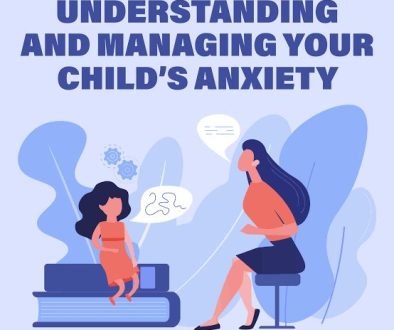Understanding Personality Disorders
Personality disorders are a group of mental health conditions characterized by enduring patterns of behavior, cognition, and inner experience that significantly deviate from cultural expectations. These patterns are inflexible and pervasive, leading to distress or impairment in various aspects of life, including social interactions, work, and relationships. Unlike temporary mood disturbances, personality disorders are long-standing and can often be traced back to adolescence or early adulthood.
Understanding Personality Disorders
Personality disorders are classified into three clusters in the Diagnostic and Statistical Manual of Mental Disorders (DSM-5), based on their characteristic features and symptoms. Each cluster encompasses different types of personality disorders, each with unique traits and challenges.
Cluster A (Odd or Eccentric Disorders)
– Paranoid Personality Disorder: Characterized by pervasive distrust and suspicion of others, individuals with this disorder often believe that others have malicious intentions, leading to social withdrawal and conflicts in relationships.
– Schizoid Personality Disorder: Individuals with this disorder display a lack of interest in social relationships and a limited range of emotional expression. They may appear detached or indifferent to social norms and relationships.
– Schizotypal Personality Disorder: This disorder involves social and interpersonal deficits along with eccentric behavior and cognitive distortions. Individuals may experience odd beliefs, magical thinking, and discomfort in close relationships.
Cluster B (Dramatic, Emotional, or Erratic Disorders)
– Antisocial Personality Disorder: Marked by a disregard for the rights of others, individuals with this disorder may engage in deceitful, impulsive, and manipulative behaviors. They often lack empathy and may show little remorse for harmful actions.
– Borderline Personality Disorder: This disorder is characterized by instability in emotions, self-image, and relationships. Individuals may experience intense mood swings, fear of abandonment, and engage in impulsive behaviors.
– Histrionic Personality Disorder: Individuals with this disorder often seek attention and may exhibit overly dramatic behavior, emotionality, and a preoccupation with their appearance. They may feel uncomfortable when not the center of attention.
– Narcissistic Personality Disorder: This disorder is marked by a grandiose sense of self-importance, a need for admiration, and a lack of empathy for others. Individuals may exploit relationships for personal gain and have a fragile self-esteem.
Cluster C (Anxious or Fearful Disorders)
– Avoidant Personality Disorder: Characterized by a pattern of social inhibition, feelings of inadequacy, and hypersensitivity to negative evaluation, individuals with this disorder may avoid social situations due to fear of criticism or rejection.
– Dependent Personality Disorder: Individuals with this disorder exhibit a pervasive need to be taken care of, leading to submissive and clinging behaviors. They may have difficulty making decisions without excessive reassurance from others.
– Obsessive-Compulsive Personality Disorder: This disorder involves a preoccupation with orderliness, perfectionism, and control. Individuals may be excessively devoted to work and productivity, often at the expense of flexibility and relationships.
Symptoms and Diagnosis
The symptoms of personality disorders can vary widely based on the specific disorder. Common features include:
– Difficulty in interpersonal relationships: Individuals often struggle to establish and maintain healthy relationships due to their maladaptive behaviors and attitudes.
– Distorted self-image: Many individuals with personality disorders have an inconsistent or distorted sense of self, which can lead to confusion about their identity.
– Emotional instability: Many personality disorders are characterized by intense emotional responses or a lack of emotional depth, resulting in difficulties managing emotions.
– Impulsive or harmful behaviors: Certain disorders, particularly in Cluster B, may involve impulsive actions that can harm oneself or others.
Diagnosis of personality disorders involves a thorough clinical assessment by a mental health professional. This may include structured interviews, self-report questionnaires, and gathering information from family members or other significant individuals in the person’s life. The clinician will assess how the individual’s behavior and patterns differ from cultural norms and whether these patterns are causing significant distress or impairment.
Causes and Risk Factors
The causes of personality disorders are complex and involve a combination of genetic, environmental, and psychological factors. Some potential contributors include:
– Genetics: Research suggests that genetic factors may play a role in the development of certain personality disorders, particularly those in Cluster B.
– Childhood experiences: Adverse childhood experiences, such as trauma, neglect, or abuse, can contribute to the development of personality disorders, shaping maladaptive coping mechanisms and interpersonal patterns.
– Environmental influences: Family dynamics, cultural factors, and social environments can impact personality development and contribute to the manifestation of personality disorders.
Treatment and Management of Personality Disorders
Treating personality disorders can be challenging due to the enduring nature of these disorders and the often ingrained patterns of behavior. However, effective treatment options can lead to significant improvements in functioning and quality of life. Common approaches include:
– Psychotherapy: Different types of therapy can be effective for various personality disorders. Dialectical behavior therapy (DBT) is particularly effective for borderline personality disorder, focusing on emotional regulation and interpersonal effectiveness. Cognitive-behavioral therapy (CBT) can help individuals challenge and change maladaptive thought patterns and behaviors.
– Medication: While no specific medications are approved for treating personality disorders, certain medications can help manage symptoms, such as anxiety, depression, or impulsivity. Antidepressants, mood stabilizers, and antipsychotic medications may be prescribed based on individual needs.
– Group therapy: Participating in group therapy can provide individuals with support and feedback from peers who understand their experiences. This can foster a sense of community and help individuals learn healthier ways of relating to others.
– Skills training: Many individuals with personality disorders benefit from skills training, which can teach practical coping strategies for managing emotions, improving relationships, and enhancing problem-solving abilities.
Living with Personality Disorders
Living with a personality disorder can be challenging, both for individuals and their loved ones. Relationships can be strained, and individuals may experience a range of difficulties in daily life, including maintaining jobs, navigating social situations, and managing emotions. Education and awareness about personality disorders can be beneficial for both individuals and their families, fostering understanding and promoting effective communication.
With appropriate treatment and support, many individuals with personality disorders can lead fulfilling lives. Developing healthy coping mechanisms, building strong support networks, and working closely with mental health professionals are crucial steps in managing these complex conditions.
Conclusion
Personality disorders represent a diverse range of mental health conditions characterized by persistent and maladaptive patterns of thinking, feeling, and behaving. While these disorders can significantly impact an individual’s quality of life and relationships, effective treatments are available to help manage symptoms and improve functioning. Early intervention, comprehensive assessment, and personalized treatment plans can make a significant difference for individuals living with personality disorders, helping them navigate the challenges they face and achieve greater emotional well-being.



